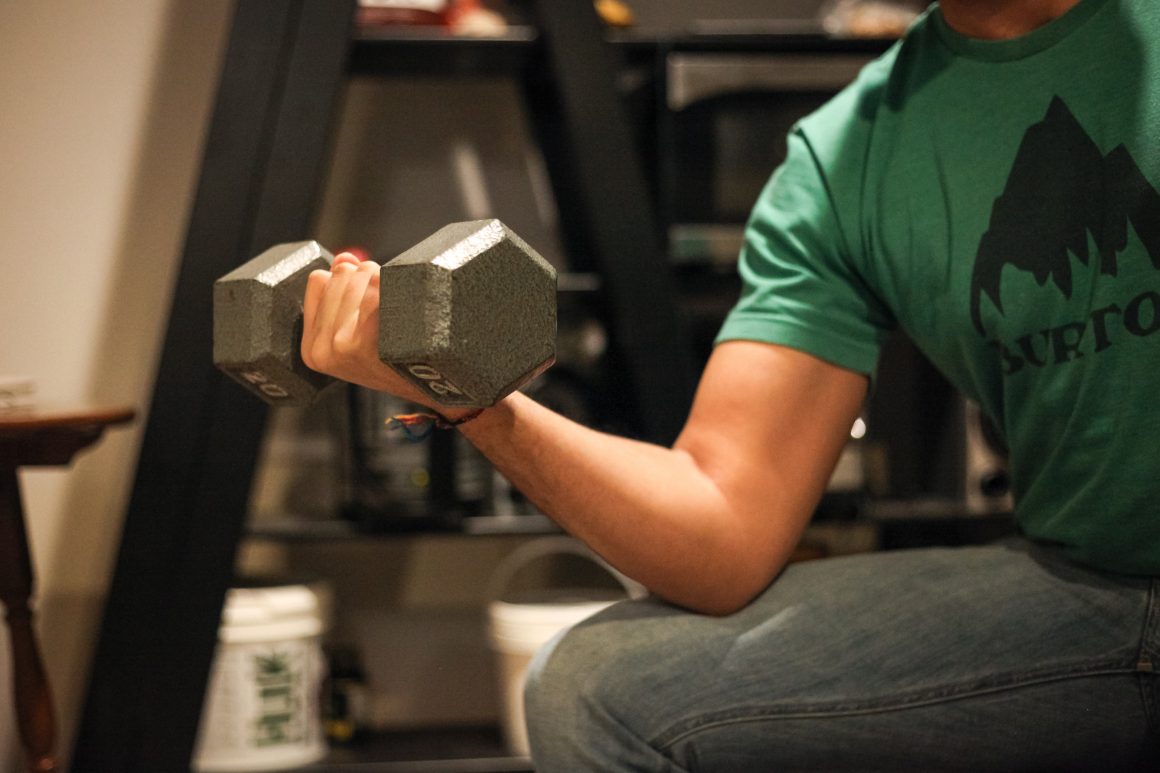
Realistic gym tips for intimidated beginners
By Qi (Lianna) Xiao, February 28 2019—
So you’re finally ready to strap on your new sneakers and brave the Fitness Centre. Maybe, after multiple forgotten New Year’s resolutions, you’ve decided to put your mind to it and take your first steps on your fitness journey. Or maybe you’ve always wanted to incorporate fitness into your life but have fears about hitting the gym for the first time.
The gym can seem quite intimidating from the outside when you see people pumping iron and benching twice your body weight. However, there are some steps you can take to prepare yourself for your first gym session and make that first step much less daunting. Here are a few tips for getting started at the gym if you’re feeling lost.
Get the right gear:
Wearing a sporty outfit can help get you in the mood to be active. Whether it’s athletic leggings or even a pair of basketball shorts, the right clothing can make a difference in your motivation levels and routine. Be sure to have a comfy pair of runners for cardio exercises. Even casual flat-bottom shoes like Chuck Taylor Converse are a decent option for lifting weights.
Find a buddy:
Braving the gym for the first time can be intimidating, especially considering the unfamiliarity of the gym environment. In this case, having a support system like a gym buddy by your side can make a big difference. Your buddy could be someone who’s also a beginner like you or they could be an experienced gym go-er who can help answer any questions and safely spot you for exercises. Having a buddy can make your first gym experience go much more smoothly.
Identify your fitness goals:
Knowing what changes you want to see in your body is crucial for determining what exercises you should focus on. Ask yourself what you want. Are you looking to bulk up your muscle? Gain weight? Lower your body fat percentage? It’s important to identify your fitness goals before you start hitting the gym so you can plan your routine accordingly.
Go in with a plan:
The internet is a great source of information for planning a routine beforehand and entering the gym with a specific plan.
“The gym can be a very intimidating environment […] and it becomes a lot less stressful when you follow a workout somebody posts on Instagram or Youtube,” says fitness blogger Leslie Qiu. “Do video research on how to use a machine correctly, how to use good form when lifting weights, and recruiting the muscle(s) you want to target.”
Experiment:
The hardest part of a fitness journey is getting into a routine and making it past the difficult first two weeks. It’s much easier to keep up a routine if you find a type of workout that you enjoy doing. There are many options apart from lifting and doing cardio at the gym. If you prefer alternative fitness options, some possible workout classes to try out include hot yoga, spin cycling, Pilates or kickboxing. Some gyms and classes even offer complimentary lessons as part of a free trial, so do your research.
Ask for advice:
Even the most toned or muscular person at the gym started as a beginner, so it’s important to remember that you’re not alone in this journey. If you’re at the gym and you’re not sure how to use a machine, or you’re concerned about your form, don’t be afraid to ask another gym-goer. In my personal experience, many people are very willing to help, as they’ve been in your shoes before.
Get fit at home:
At-home fitness can be just as effective and is a great start or supplement to a gym routine. If you’re uncomfortable in social situations like being at the gym or if going to a fitness facility doesn’t fit your schedule, it’s totally possible to make an effective fitness routine at home. For at-home weight training, you can buy dumbbells of various sizes at Canadian Tire and packs of resistance bands are easily found in online stores. If you’re interested in decreasing soreness after workouts, yoga mats and foam rollers are great to use for post-workout stretches and massaging out stubborn knots in your muscles.
Don’t focus on the scale:
Many people tend to fixate on the number on the scale during their fitness journey. Your weight, however, isn’t the best indicator of whether your body is changing from exercise. The same volume of muscle weighs more than fat, which means some people see the number on the scale increase as they exercise and this discourages them. The number on the scale is not very accurate for documenting your fitness progress. Instead, try taking pictures of yourself after each gym session. Over time, you’ll see the changes in your body, which can continue to motivate you to keep at it on days when you feel like giving in.
One of the most important parts of maintaining your fitness journey is acknowledging your progress. Looking back frequently and seeing how your body has changed since the start of your journey will remind you of the fruit of your hard work. During this difficult process of improving and physically challenging yourself, remember to always be proud of how far you’ve come.
